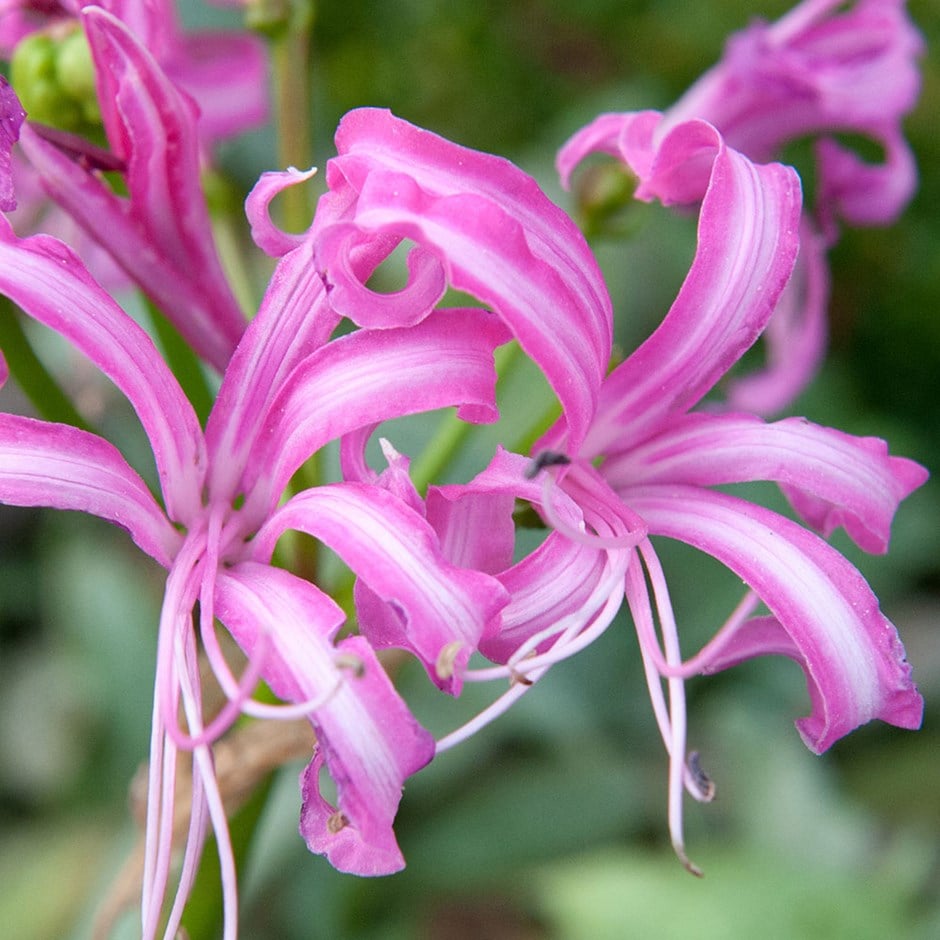Nerine bowdenii
bowden lily nerine bulb
- 1 × bulb
- £5.39 £5.99
- Delivered by early February
- 2 + 1 FREE bulbs
- £10.78 £11.98 £3.59 each
- Delivered by early February
Delivery options
- Bulbs (only) £4.99
- Position: full sun
- Soil: oderately fertile, well-drained soil, or general-purpose potting compost for containers
- Rate of growth: average to fast
- Flowering period: September to November
- Hardiness: borderline hardy (may need winter protection)
- Bulb size: 12/14
Coming on strong at a time of the year when most plants are looking decidedly sorry for themselves, this bulbous perennial makes a wonderful addition to the mixed border. The flowers it produces are quite exotic-looking, a strong clear pink with a wavy edge to the petals. They top stout upright stems, which arise usually before, but sometimes with, the low tufts of strap-shaped foliage.
Tolerant of low temperatures provided they are not too wet, they originate from South Africa so will be happiest in a freely draining soil where they can bake in full sun.
Nerine bowdenii will also flower best when they are congested, and this makes them ideal for potas and containers.
Tolerant of low temperatures provided they are not too wet, they originate from South Africa so will be happiest in a freely draining soil where they can bake in full sun.
Nerine bowdenii will also flower best when they are congested, and this makes them ideal for potas and containers.
Plant bulbs shallowly in well-drained soil, leaving the neck just above the surface, spacing 10-15cm (4-6in) apart. Choose a sunny, sheltered position where they won’t be shaded or crowded. They perform best in dense clumps, so avoid disturbing the roots once planted, and only lift and divide when the clump becomes overcrowded.
Mulch lightly to conserve moisture but keep the necks clear, and water sparingly during the growing season—overwatering can rot the bulbs. After flowering, allow the foliage to die back naturally to feed the bulbs for next year’s blooms.
Protect the crown from hard frosts with a generous layer of dry mulch after flowering, or overwinter potted plants in an unheated greenhouse in colder regions.
Mulch lightly to conserve moisture but keep the necks clear, and water sparingly during the growing season—overwatering can rot the bulbs. After flowering, allow the foliage to die back naturally to feed the bulbs for next year’s blooms.
Protect the crown from hard frosts with a generous layer of dry mulch after flowering, or overwinter potted plants in an unheated greenhouse in colder regions.
- Humans/Pets: Ornamental bulbs - not to be eaten
